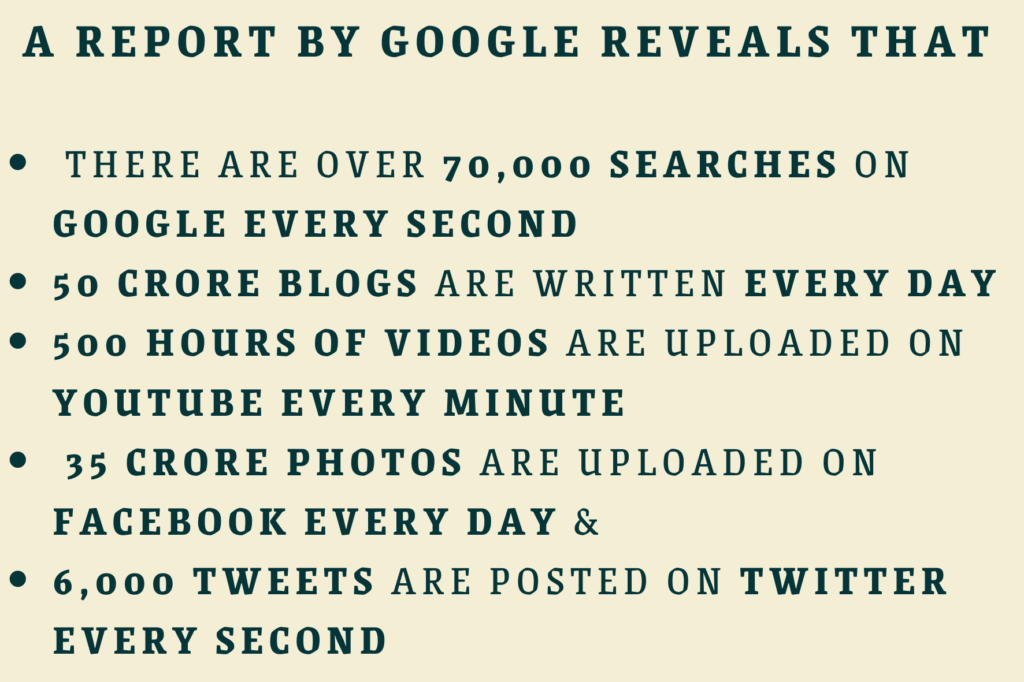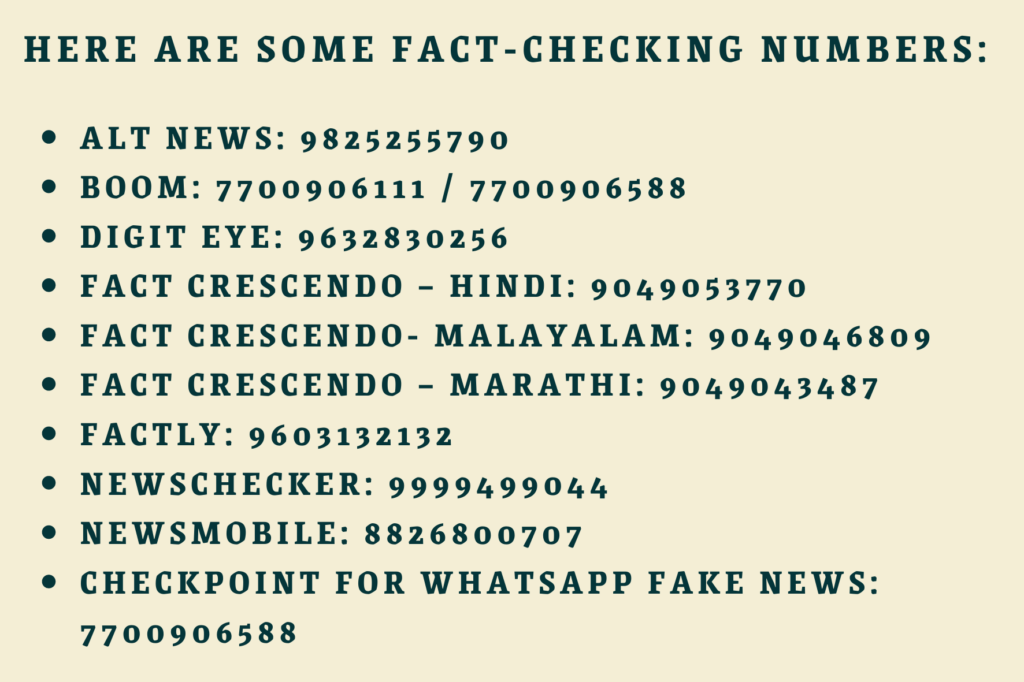How To Spot Fake News & Misinformation Online
Fake news can be dangerous. Read this to know the hacks of spotting misinformation online.
Think back to 2020. You must have received or seen numerous posts on social media or WhatsApp claiming gargling with warm water mixed with salt or vinegar was an effective home remedy for Covid-19. These posts went viral on social media and claimed that Coronavirus could be cured through home remedies.
As the world’s largest democracy with the second largest population, India struggles with the contagion of fake news like the above. With an estimated 650 million people online in 2020, India has the second-largest number of internet users in the world. Fifty percent of India’s population is estimated to have internet access. India is the largest user base for platforms like FB, WhatsApp and YouTube. Internet is no longer an urban commodity in India. According to the Annual Search India Report (2020), Google, two out of three Google searches come from outside metro cities like Bangalore, Chennai, Delhi, Hyderabad, Kolkata, Mumbai and local language search has increased by 10 times.
We are living in an age of information overdose that may or may not be verified. Misinformation or fake news could be misleading and even fatal. A Covid-19 positive patient got critical after drinking sanitiser in UP based on misinformation floating on social media. In Faridabad, a Covid-19 positive chemist tried to self-medicate to ward off symptoms based on fake info on social media. A video made by a Pakistan-based NGO to spread awareness on child kidnapping was doctored and released in India with the aim to make people believe that some men from Pakistan were kidnapping Indian children. That resulted in tragic consequences, lynchings, mob violence and deaths across several states in India.
So how do you spot fake news from this sea of information? Samrin Inayati, a Google certified trainer at FactShala, a news and information literacy programme tells us how.
Not everything is news: Not everything that looks like news online is actually news. In traditional media, raw information is published only when it is verified and cross checked from reliable sources by reporters and editors. However, in social media there is no verification, no gatekeeping or editors and one swipe is all it takes to publish. So everything on social media is not the real news
Think critically and analyse: People process information differently. We see things a lot differently than others even when staring at the same image. Analyse the information from different perspectives, compare it with similar situations, evaluate it critically, conclude objectively and then decide what to believe and do. If you get information that the World Health Organisation (WHO) has stated that drinking herbal tea can control Coronavirus, it is important for you to understand why WHO has said so, do some research and then believe and follow. Be a smart consumer of news and become responsible citizens.
Do not go with the flow blindly: You do not have to believe everything to fit in and feel accepted in a group. If you get a WhatsApp message from a group that states Covid-19 vaccine is harmful, do not accept it just because others in the group believe it. Question yourself, find relevant research and sources of information and then make an informed choice.
Identify your biases: We often tend to get bias, a tendency, inclination or prejudice towards something or someone. Beliefs and personal biases play a big role in deciding whether someone will believe or even reject a message and prevent us from questioning the authority, reveals a user study conducted by Google. We tend to believe in lies mostly because of confirmation bias that implies favouring information that confirms our existing beliefs.
Keep source amnesia in mind: Source amnesia means we remember information but we forget or remember incorrectly where it came from. When it aligns with our point of view we tend to believe it came from a credible source and when it does not align, we consider the source to be non-credible. This too could make us believe misinformation.
Understand reiteration, the illusory truth effect: We are more likely to believe things we hear repeatedly. But hearing something repeatedly does not mean that it is true.
Ask these key questions: Who’s behind the information? Is the sender a credible authority on the subject? What do other sources say?
Does the evidence shared corroborate the claim?
Check data and time: Remember to check the publication date as old articles are often recycled and republished to serve a political purpose.
Check comments: Go through the comments that may appear below the article or publications. Internet users at times provide backed-up arguments contradicting what has been written and provide links to more responsible articles with verified sources.
Beware of the red flags on WhatsApp: Look for single arrow and double arrow signs. The first indicates the post is not original and has been forwarded. You must investigate the post before believing it. The latter indicates it has been forwarded multiple times. Before forwarding again, you must check if you are circulating any misinformation.
GOOD TO KNOW
Social media adds to confirmation bias through filter bubbles. The artificial intelligence used in social media keeps a track of what we search online and shows up news, ads, videos, images similar and relevant to our searches, matching our interests.
Examples of bias-based misinformation
A map went viral claiming the crazy spread of Chinese nationals from Wuhan to spread Coronavirus globally. However, the map actually showed connectivity of flights at a point of time. Why was it shared indiscriminately? Because it supported the bias that China has spread Coronavirus globally. Due to a bias that consumption of non-veg is harmful for health and it can cause Coronavirus, a post claiming that consumption of broiler chicken was causing the spread of Covid-19 went viral.
How can you spot media bias?
- By the selection of events that they are covering
- By the stories that are being reported, stories that are important but being ignored
- What facts and info are present and what are missing
- Are they using the same source all the time?
- Are the same panelists appearing again and again
- Is there diversity in journalists and editors?
- Ownership of the news organisation
How do you protect your family from misinformation?
- Discuss with your family members about misinformation
- Stay informed about important realities/situations/news
- Have access to credible sources of information
- Develop a healthy media consumption habit
- Ways of source verification
- Know the various fact-checking websites: When you put a news link on a fact-checking website, you will know if the link is verified or not as fact checking websites would have done the verification already.
Some of these websites are:
Vishvas News (Hindi)
PIB for government information
Google fact check explorer: This is a verified tool by Google that helps in photo verification. It is a search engine only for fact check stories. You can go here, put a few words of the forwarded message and click on the search icon and then you can find it. Put Covid Home remedy in it and see the results you get.
Google Reverse Image Search: You can upload an image or paste an image URL and it will show you whether the image is genuine or if it is morphed and photoshopped.
These tips can keep you on your toes enabling you to spot fake news and misinformation and make informed decisions.
Comments









Post a comment